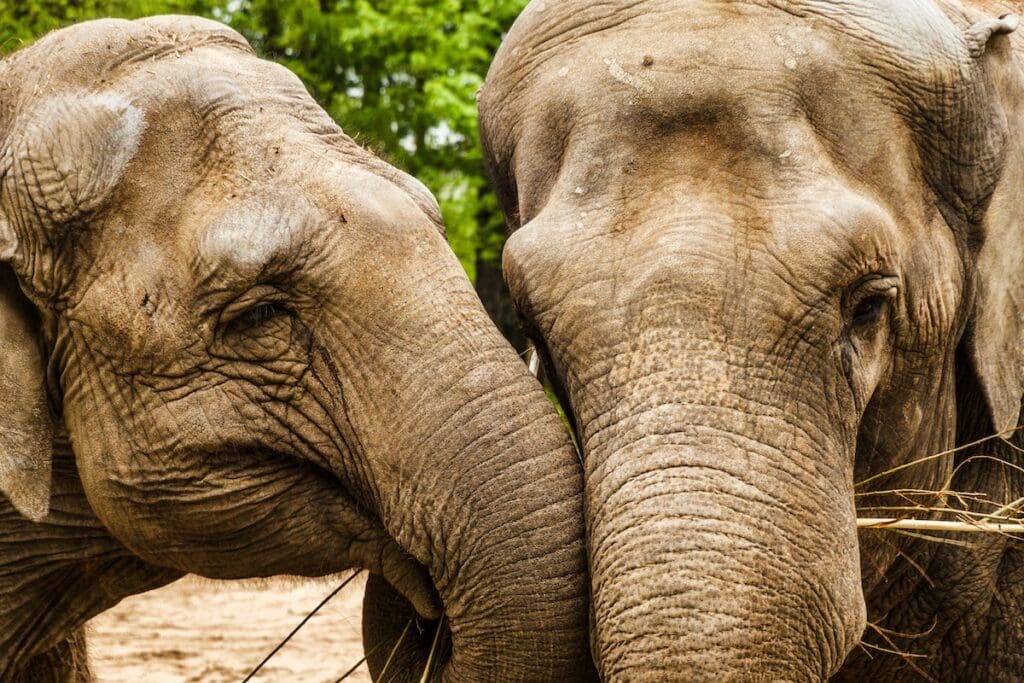
In the wild, animals have the freedom to explore their surroundings, hunt for food, and interact with other members of their species. However, in captivity, animals can become bored and stressed if they don’t have the opportunity to engage in these natural behaviors. To prevent this, zoos around the world use a technique called animal enrichment to keep their animals happy and healthy. In this blog post, we’ll explore what animal enrichment is, why it’s important, and how zoos implement it.
What is Animal Enrichment?
Animal enrichment is the process of providing captive animals with a stimulating and engaging environment that encourages natural behaviors. It involves providing animals with objects, food, or activities that challenge their minds and bodies and encourage them to engage in behaviors that they would exhibit in the wild. This can include providing puzzle feeders, hiding food, or creating opportunities for play and social interaction.
Why is Animal Enrichment Important?
Animal enrichment is important for several reasons. Firstly, it helps to prevent boredom and stress in captive animals, which can lead to health problems and behavioral issues. Secondly, it helps to improve the welfare of captive animals by providing them with an environment that encourages natural behaviors. Lastly, it helps to educate the public about the importance of animal welfare and the role that zoos play in conservation efforts.
How Do Zoos Implement Animal Enrichment?
Zoos use a variety of methods to implement animal enrichment. These methods can be broken down into four main categories: food-based enrichment, sensory enrichment, social enrichment, and environmental enrichment.
- Food-Based Enrichment
Food-based enrichment involves providing animals with food that is challenging to obtain or requires problem-solving skills. For example, a zoo might hide food in puzzle feeders or scatter food throughout an enclosure to encourage animals to use their natural foraging instincts.
- Sensory Enrichment
Sensory enrichment involves providing animals with new sights, sounds, smells, and textures to explore. This can include introducing new objects, scents, or sounds into an animal’s environment or creating opportunities for animals to interact with natural elements like soil, sand, or water.
- Social Enrichment
Social enrichment involves providing animals with opportunities for social interaction. This can include pairing animals with compatible partners, providing opportunities for play, or creating social hierarchies within groups of animals.
- Environmental Enrichment
Environmental enrichment involves modifying an animal’s physical environment to encourage natural behaviors. This can include adding natural elements like trees, rocks, or water features to an animal’s enclosure, or providing opportunities for animals to climb, dig, or explore.
Examples of Animal Enrichment
Here are a few examples of animal enrichment that you might see at a zoo:
- Providing puzzle feeders or hiding food throughout an animal’s enclosure
- Creating opportunities for animals to climb, dig, or explore their environment
- Introducing new scents, objects, or sounds into an animal’s environment
- Pairing animals with compatible partners or creating social hierarchies within groups of animals
- Creating opportunities for play, such as providing balls or toys for animals to interact with
Benefits of Animal Enrichment
Animal enrichment provides several benefits to captive animals. These benefits include:
- Reducing boredom and stress
- Encouraging natural behaviors
- Improving physical and mental health
- Reducing the risk of behavioral issues
- Enhancing public education and awareness about animal welfare and conservation efforts
Animal enrichment is an important tool that zoos use to keep their animals happy and healthy. By providing captive animals with an environment that encourages natural behaviors, zoos can improve the welfare of their animals and provide educational opportunities for the public. Whether it’s providing puzzle feeders, introducing new scents and sounds, or creating opportunities for social interactions, animal enrichment is an essential part of modern zookeeping practices. It is important to remember that zoos have a responsibility to provide the best possible care for their animals and to promote conservation efforts. By implementing animal enrichment programs, zoos can fulfill this responsibility while also providing an entertaining and educational experience for visitors. So, the next time you visit a zoo, take a moment to appreciate the care and effort that goes into creating a stimulating and engaging environment for the animals.



